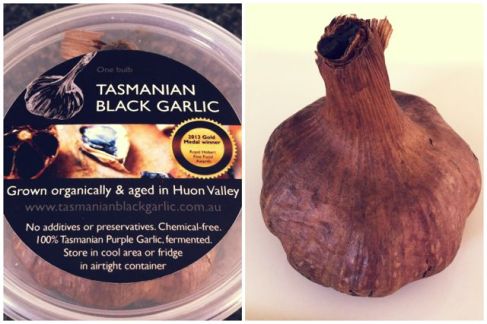Tassievore Eat Local Challenge – Week 1
Week 1’s Tassievore challenge was “Try Something New”. The challenge organisers posted some ideas on their Facebook page, including:
- Try growing something that you haven’t grown before.
- Try cooking Tasmanian quinoa.
- Try a drop of local cider, wine or beer that you haven’t tried before.
- Visit a restaurant or shop that you have heard does a good job of focussing on local ingredients.
- Visit a local farmers market if you haven’t before.
I wasn’t really sure what I was going to do.
To start with, I cooked a couple of recipes from this cookbook, which I bought a while ago.
 The book was published a few years ago by Soroptimist International of Tasmania as a fundraiser for the University of Tasmania’s project to save the Tasmanian Devil.
The book was published a few years ago by Soroptimist International of Tasmania as a fundraiser for the University of Tasmania’s project to save the Tasmanian Devil.
I’ve cooked Tasmanian quinoa before – it’s grown on the North West Coast of Tasmania by Kindred Organics. I already had some in the cupboard, so it was pretty easy to make that one night instead of rice.
What I should have done (in hindsight) is use it in a way I haven’t before, and there are some recipes on Kindred’s website that I could have tried. I also found out that they produce Adzuki beans, which I haven’t ever used before, so if I’d done my research earlier in the week I could have got some of them and blitzed this week’s challenge.
Never mind. Next week.
I was keeping my eyes open during the week for something I hadn’t tried before, and saw some Tasmanian mountain pepper in one of the shops I was browsing it. I picked up a packet that has it in four different forms:
- The whole leaf, which you can use in the same way as bay leaves
- The whole berries, which could substitute for black peppercorns
- Ground leaves, which the package suggests adding to vinaigrette or mayonnaise, scones, bread and pasta, or as a garnish
- Ground berry, which I imagine you’d use as a pepper substitute in cooking
These are freeze dried, which end up being milder than the air dried berries, and from what I’ve read, the recommendation for using them is about half the amount that you would use of regular pepper.
So now I have to find a recipe to use this in.
I also stumbled across some Tasmanian black garlic. Now this really is something I haven’t tried before – I’d never even heard of it. I was curious, so I bought some, without having a clue what to do with it.
Luckily the Tasmanian Black Garlic Company has a website, which tells me:
Tasmanian Black Garlic is not a garlic variety, rather organically grown Tasmanian Purple garlic in an aged state. Because garlic contains sugars and amino acids, when garlic undergoes fermentation, these elements produce melanoidin, a dark-coloured substance that is responsible for the colour of black garlic.
According to the website you can peel it and eat it exactly as it is, and they suggest using it on a cheese platter. Or you can cook with it in place of regular garlic.
It keeps in the fridge for six months, so I have plenty of time to use in different ways.
Finally, I decided to grow something I haven’t grown before. Well at least not successfully.
Basil.
For some reason I can’t make this stuff grow, and end up paying $4 a bunch whenever I need basil.
I have some rather sad looking plants in pots near the kitchen window, and the other day someone suggested I should try growing from seed instead of getting seedlings.
I found some Tassie basil seeds during the week from Southern Harvest and decided to have another go.
Yes I know, the packet says in cool areas sow from September to December, and it’s now March. So yes, I’m probably setting myself up for a big fail. I’m hoping I might be able to grow it as an indoor plant over autumn and winter. I haven’t done this before, so it’s basically just an experiment.
If it doesn’t work, I’ve lost a few seeds. If it does then I’ll be very happy!
So now it’s on to Week 2 of the challenge: Support Local Businesses.


